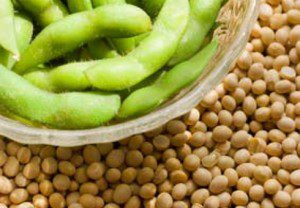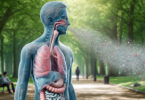By Sayer Ji
Contributing writer for Wake Up World
Could the long-sought after cure for type 1 diabetes be as close as your kitchen cupboard? An accumulating body of scientific research appears to point in exactly that direction.
One so-called ‘incurable disease’ that afflicts millions of people around the world is type 1 diabetes. Unlike type 2 diabetes, where the body becomes resistant to its own insulin, type 1 is characterized by the inability of the body to produce enough insulin, as the beta cells within the pancreas which are responsible for the production of insulin (and the proinsulin from which it is made) are either destroyed or seriously impaired. This can happen due to autoimmune issues, bacterial or viral infections, incompatible foods in the diet and chemical exposures (or a combination of any one or more of these factors), to name but a few major triggers.
And yet, plenty of peer-reviewed and published research now indicates that plant compounds, including many found within commonly consumed foods, are capable of stimulating beta cell regeneration within the pancreas, and as a result potentially providing a cure – truly a four letter word, as far as the profit-based model of medicine goes, which thrives on the concept of the incurability of the disease-afflicted human body in favor of symptom management.
The discovery of the beta cell regenerative potential of various food and compounds is bound to upset a burgeoning diabetes industry, with millions of dollars of public and private money continually being poured into fund-raising efforts for a future “cure”; a cure that will presumably be delivered through the prohibitively expensive pharmaceutical, vaccine or biologic (e.g. stem cells, islet cell xenotransplantation) pipeline, which by the very nature of the FDA drug approval process requires the promotion of synthetic (and therefore patentable) compounds over natural ones. [Also see: Why The Law Forbids The Medicinal Use of Natural Substances]
Let’s take a look at the latest preclinical study on the topic, published last month in the Canadian Journal of Physiology and Pharmacology [1]. An active fraction of flaxseed, which researchers named Linun usitassimum active fraction (LU6), was found to generate a wide range of benefits in a type 1 diabetes animal model, including the following:
- Improved glucose utilization in the liver
- Supported normalized glycogenesis (glucose forming activity) in the liver and muscle tissue
- Reduced pancreatic and intestinal glucosidase inhibitory activity, which translates into lower post-meal blood sugar elevations
Even more remarkable was the observation that this flaxseed compound normalized plasma insulin and C-peptide levels (C peptide is not C-reactive protein, rather it is a direct indicator of how much insulin is being produced by the beta cells in the body, an indication that beta cell function was effectively restored. [Also see: Diabetes: An Entirely Preventable & Reversible Condition]
The researchers described the truly amazing results as follows:
Normalization of plasma insulin and C-peptide levels were observed in diabetic mice, indicating endogenous insulin secretion after the treatment with LU6. The histochemical and immunohistochemical analysis on pancreatic islets suggests the role of LU6 fraction in islet regeneration and insulin secretion as evident in increase functional pancreatic islets producing insulin.
Furthermore, significant insulin producing islet formation was also observed in in vitro PANC-1 cells after LU6 treatment, indicating the cellular aggregates to be newly formed islets. This suggests the potential of LU6 fraction in the formation of new islets in vitro, as well as in vivo. Thus, LU6 can be used as a nutraceutical-based first-line treatment for diabetes. [emphasis added]
Keep in mind that this is not the first time that flaxseed has been found to improve blood sugar disorders. We have published a few studies on GreenMedInfo.com already indexed on the topic that you can view here: Flaxseed and Diabetes.
Furthermore, we have found a broad range of natural substances experimentally confirmed to stimulate beta cell regeneration, 10 of which are listed below:
- Arginine: a 2007 study found that the amino acid L-arginine is capable of stimulating the genesis of beta cells in an animal model of alloxan-induced diabetes.[2]
- Avocado: A 2007 study found that avocado seed extract reduced blood sugar in diabetic rats. Researchers observed a restorative and protective effect on pancreatic islet cells in the treated group.[3]
- Berberine: A 2009 study found that the berberine plant compound, commonly found in herbs such as barberry and goldenseal, induces beta cell regeneration in diabetic rats, which lends explanation for why it has been used for 1400 years in China to treat diabetes.[4]
- Chard: A 2000 study found that chard extract given to diabetic rats stimulates the recovery of injured beta cells.[5]
- Corn Silk: A 2009 study found that corn silk reduces blood sugar and stimulates beta cell regeneration in type 1 diabetic rats.[6]
- Curcumin (from Turmeric): A 2010 study found that curcumin stimulates beta cell regeneration in type 1 diabetic rats.[7] Additionally, a 2008 study found that curcumin preserves pancreatic islet cell survival and transplantation efficiency.[8]
- Genistein (from soy, red clover): A 2010 study found that genistein induces pancreatic beta-cell proliferation through activation of multiple signaling pathways and prevents insulin-deficient diabetes in mice.[9]
- Honey: A 2010 human study found that long-term consumption of honey might have positive effects on the metabolic derangements of type 1 diabetes, including possible beta cell regeneration as indicating by increases in fasting C-peptide levels.[10]
- Nigella Sativa (black seed): A 2003 animal study found that black seed consumption lead to partial regeneration/proliferation of the beta-cells.[11] A 2010 human study also found that the consumption of one gram of black seed a day for up to 12 weeks had a broad range of beneficial effects in diabetics, including increasing beta cell function.[12]
- Stevia: A 2011 human study found that stevia has anti-diabetic properties, including revitalizing damaged beta cells, and compares favorably with the drug glibenclamide but without the adverse effects.[13]
For a full list of beta cell regenerating substances, view GreenMedInfo’s page on the topic. The data is also available to download as a PDF for a nominal fee. GMI Members can acquire the PDF by using their membership tokens without paying the nominal fee.
For additional research on the topic of regenerative medicine and diabetes you can consult my articles 6 Bodily Tissues that Can Be Regenerated Through Nutrition and Diabetes: An Entirely Preventable and Reversible Disease. Or, visit GreenMedInfo’s Health Guide on Blood Sugar Disorders.
Resources:
[1] Menakshi Bhat Dusane, Bimba N Joshi. Beneficial effect of flax seeds in streptozotocin (STZ) induced diabetic mice: isolation of active fraction having islet regenerative and glucosidase inhibitory properties. Can J Physiol Pharmacol. 2013 May ;91(5):325-31. Epub 2013 Jan 16. PMID:23656171
[2] Ana Vasilijevic, Biljana Buzadzic, Aleksandra Korac, Vesna Petrovic, Aleksandra Jankovic, Bato Korac.Beneficial effects of L-arginine nitric oxide-producing pathway in rats treated with alloxan. J Physiol. 2007 Nov 1;584(Pt 3):921-33. Epub 2007 Aug 23. PMID: 17717015
[3] Do Edem, Is Ekanem, Pe Ebong. Effect of aqueous extracts of alligator pear seed (Persea americana mill) on blood glucose and histopathology of pancreas in alloxan-induced diabetic rats. Transplantation. 2007 Jul 27;84(2):173-9. PMID: 19553173
[4] Jiyin Zhou, Shiwen Zhou, Jianlin Tang, Kebin Zhang, Lixia Guang, Yongping Huang, Ying Xu, Yi Ying, Le Zhang, Dandan Li. Protective effect of berberine on beta cells in streptozotocin- and high-carbohydrate/high-fat diet-induced diabetic rats. Eur J Pharmacol. 2009 Mar 15;606(1-3):262-8. Epub 2009 Jan 19. PMID: 19374872
[5] S Bolkent, R YanardaÄŸ, A TabakoÄŸlu-OÄŸuz, O Ozsoy-Saçan. Effects of chard (Beta vulgaris L. var. Cicla) extract on pancreatic B cells in streptozotocin-diabetic rats: a morphological and biochemical study. J Ethnopharmacol. 2000 Nov;73(1-2):251-9. PMID: 11025163
[6] Jianyou Guo, Tongjun Liu, Linna Han, Yongmei Liu. The effects of corn silk on glycaemic metabolism. Nutr Metab (Lond).2009 Nov 23;6:47. PMID: 19930631
[7] Meghana Kanitkar, Ramesh R Bhonde. Curcumin treatment enhances islet recovery by induction of heat shock response proteins, Hsp70 and heme oxygenase-1, during cryopreservation.Life Sci. 2008 Jan 16;82(3-4):182-9. Epub 2007 Nov 21. PMID: 18093618
[8] Meghana Kanitkar, Ramesh R Bhonde. Curcumin treatment enhances islet recovery by induction of heat shock response proteins, Hsp70 and heme oxygenase-1, during cryopreservation.Life Sci. 2008 Jan 16;82(3-4):182-9. Epub 2007 Nov 21. PMID: 18093618
[9] Zhuo Fu, Wen Zhang, Wei Zhen, Hazel Lum, Jerry Nadler, Josep Bassaganya-Riera, Zhenquan Jia, Yanwen Wang, Hara Misra, Dongmin Liu. Genistein induces pancreatic beta-cell proliferation through activation of multiple signaling pathways and prevents insulin-deficient diabetes in mice. Endocrinology. 2010 Jul ;151(7):3026-37. Epub 2010 May 19. PMID: 20484465
[10] Mamdouh M Abdulrhman, Mohamed H El-Hefnawy, Rasha H Aly, Rania H Shatla, Rasha M Mamdouh, Doaa M Mahmoud, Waheed S Mohamed. Metabolic Effects of Honey in Type 1 Diabetes Mellitus: A Randomized Crossover Pilot Study. J Med Food. 2012 Dec 20. Epub 2012 Dec 20. PMID:23256446
[11] Mehmet Kanter, Ismail Meral, Zabit Yener, Hanefi Ozbek, Halit Demir. Partial regeneration/proliferation of the beta-cells in the islets of Langerhans by Nigella sativa L. in streptozotocin-induced diabetic rats. Tohoku J Exp Med. 2003 Dec;201(4):213-9. PMID:14690013
[12] Abdullah O Bamosa, Huda Kaatabi, Fatma M Lebdaa, Abdul-Muhssen Al Elq, Ali Al-Sultanb. Effect of Nigella sativa seeds on the glycemic control of patients with type 2 diabetes mellitus. Indian J Physiol Pharmacol. 2010 Oct-Dec;54(4):344-54. PMID: 21675032
[13] Himanshu Misra, Manish Soni, Narendra Silawat, Darshana Mehta, B K Mehta, D C Jain. Antidiabetic activity of medium-polar extract from the leaves of Stevia rebaudiana Bert. (Bertoni) on alloxan-induced diabetic rats. J Pharm Bioallied Sci. 2011 Apr ;3(2):242-8. PMID: 21687353
Recommended articles by Sayer Ji:
- Brain Regeneration: Why It’s Real and How To Do It
- Research: Garlic is an Effective Natural Treatment for Heart Disease
- Wi-Fi Devices Increase Mercury Release From Dental Amalgams
- Mammography Is Harmful and Should Be Abandoned, Scientific Review Concludes
- “Killer Germs” Obliterated by Medicinal Smoke Smudging, Study Reveals
- Turmeric’s ‘Smart Kill’ Properties Put Chemo & Radiation To Shame
- Beet Juice Boosts Cognitive Function In One Dose
- Glyphosate (Roundup) Carcinogenic In the PARTS PER TRILLION Range
About the author:

Sayer Ji is the founder of Greenmedinfo.com, a reviewer at the International Journal of Human Nutrition and Functional Medicine, Co-founder and CEO of Systome Biomed, Vice Chairman of the Board of the National Health Federation, and Steering Committee Member of the Global Non-GMO Foundation.
For more, visit GreenMedInfo.com and Facebook.com/GreenMedInfo, or sign up for GreenMedInfo’s free e-Newsletter.
© GreenMedInfo LLC. This work is reproduced and distributed with the permission of GreenMedInfo LLC. Want to learn more from GreenMedInfo? Sign up for their newsletter here.

If you've found value in our articles, we invite you to support the release of our brand-new book, "Gratitude Practices for Kids: A Practical Guide for Adults to Instill a Spirit of Appreciation and Positivity in the Next Generation."
"Gratitude Practices for Kids" brings together over 25 innovative and accessible practices designed to enhance gratitude in everyday life. This comprehensive guide is backed by 17 scientific studies, ensuring each concept is grounded in research, underscoring our commitment to nurturing growth, emotional intelligence, and positive interactions between adults and children.
We encourage you to opt for the paperback version to celebrate this new release. Dive into its fresh pages away from digital distractions, allowing you to immerse yourself in the transformative practices it offers.
Over recent years, Wake Up World has faced significant online censorship, which has impacted our financial ability to operate. Moving into book publishing represents a strategic step to secure the ongoing funds needed to continue our mission. By purchasing Gratitude for Kids, you help us keep our content free and accessible to everyone, avoiding needing a paywall. With over 8,500 articles published in the last 13 years, we remain dedicated to keeping our valuable content open to all.








